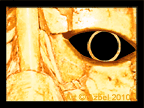Códices prehispánicos
El artículo introductorio por Miguel
León-Portilla, advierte que
los códices hablan de “Las cosas divinas, humanas y naturales…” que
vivieron nuestros antepasados. Para facilitar la comprensión de estos,
el número está dividido conforme a los grupos de culturas y/o regiones
que representan los manuscritos:
2. Los códices del Grupo Borgia: Este
es un grupo de códices muy bellos pero de difícil interpretación por su
naturaleza adivinatoria y la incertidumbre de su proceder. El texto fue
escrito por la reconocida Dra. Elizabeth Boone de la Universidad de
Tulane.
3. Los códices mixtecos de
Oaxaca: Relatan genealogías y epopeyas del Señor Ocho Venado, gobernante
mixteco. Su autor, el Dr Manuel Hermann, ofrece por primera vez, una
interpretación de la vida de “Ocho Venado”, basada únicamente en la
lectura de los códices.
4. Los códices del Centro de México que
marcan la transición de los prehispánicos a los coloniales. El Dr
Xavier Noguez eligió tres códices para hablar de ello desde varios
puntos de vista: el Borbónico, la Tira de la Peregrinación y la Matrícula de Tributos .
5. Por último, tenemos un innovador
artículo, escrito por el Dr. Johannes Neurath, que nos invita a entender
hoy el uso ritual de los códices a través de sus imágenes.
------------------------------------------------------------------------------
Pre-hispanic Codices
The introductory article by Miguel Leon-Portilla, warns that the codices speak of "Things divine, human and natural ..." which our ancestors lived. To facilitate understanding of these, the number is divided according to cultural groups and / or regions that represent the manuscripts:
1. Mayan codices: Written by David Stuart, one of the world's best Mayan epigraphers now resides in Austin Texas .
2.The Borgia Group: This is a very beautiful group of codices but difficult to interpret in nature divination and uncertainty for its action. The text was written by the renowned Dr. Elizabeth Boone Tulane University.
3. Oaxaca Mixtec codices: Relate genealogies and epics of Lord Eight Deer, Mixtec ruler. Its author, Dr Manuel Hermann, provides for the first time, an interpretation of the life of "Eight Deer" based solely on reading the codices.
4. The codices Mexico Center that mark the transition from the colonial prehispanic. Dr Xavier Noguez chose three codices to discuss it from several points of view: the Bourbon, the Pilgrimage Strip and Registration of Taxes.
5. Finally, we have a groundbreaking article, written by Dr. Johannes Neurath, who invites us to understand today the ritual use of the codices through their images. 5. Finally, we have a groundbreaking article, written by Dr. Johannes Neurath, who invites us to understand today the ritual use of the codices through their images.
The painter-scribes of the pre-Hispanic codices, the “tlacuilos”, could dialogue with their heart, producing unique works of art that revealed their perception of daily life, sacred matters, time, nature and their gods. This pictorial art is one of many important and interconnected art forms passed down to us from the cultures that existed before the Spaniards’ arrival




















































































































































































































Gracias por compartir esta información! Saludos
ResponderEliminarOpino lo mismo, hay que compartir esta página y fomentar su lectura, Gracias al equipo del Mayista!
ResponderEliminar